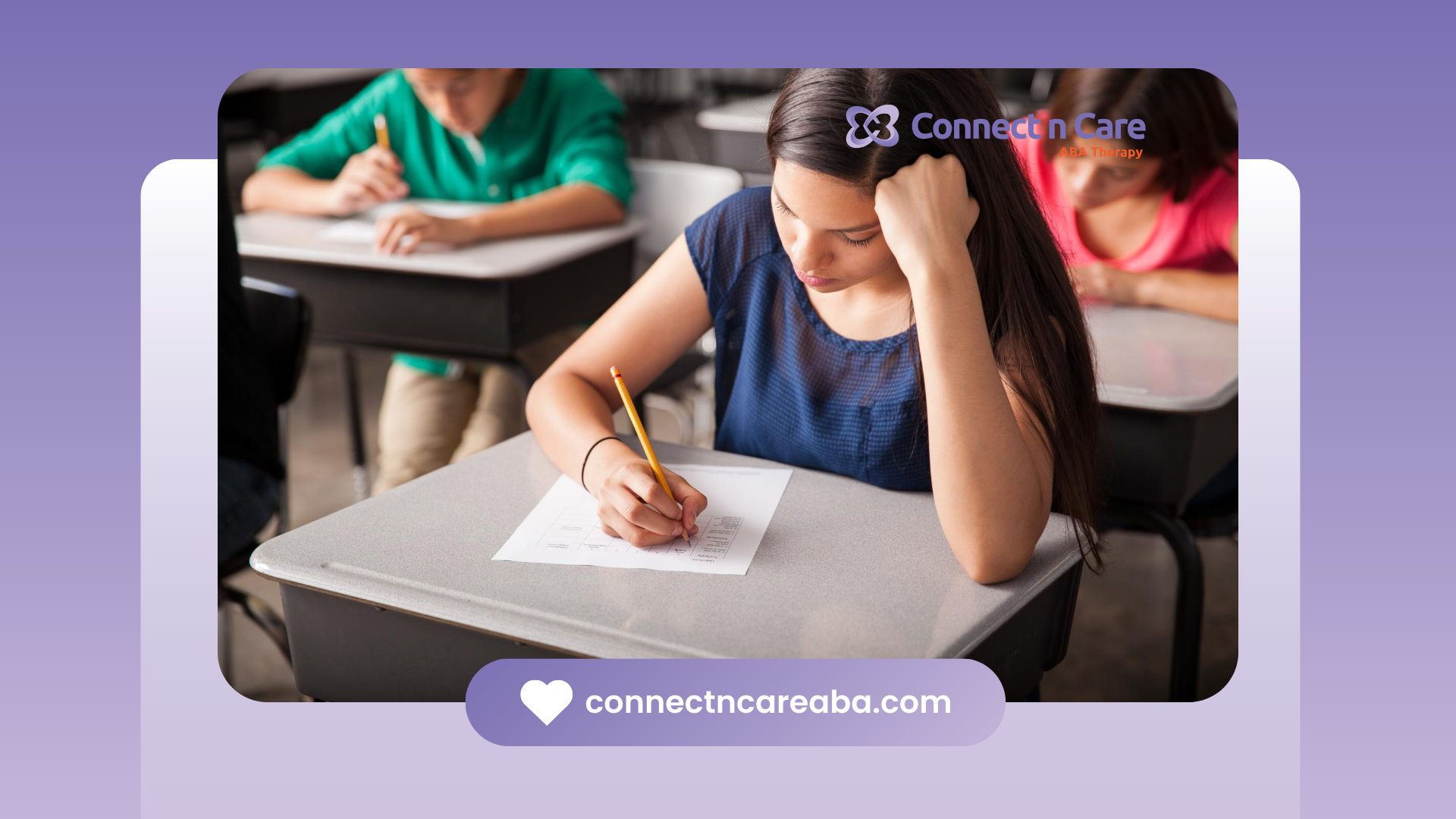Assisting Autistic Adults
Helping nonverbal autistic adults express themselves better means finding creative and effective ways for them to communicate. Trying out different tools can boost their ability to interact, benefiting both the individual and those around them.
Supportive Communication Methods
Communicating can be quite tough for autistic adults who don’t use words to talk. That's where supportive methods come in handy, bridging the gap in communication. Visual tools like picture books or boards are super helpful. They use images and simple words to convey what one wants to say. These tools help folks articulate their needs and thoughts with more ease.
Augmentative and alternative communication, or AAC for short, is another game-changer. It offers different paths for those who find talking hard, including stuff like cue cards and speech devices. These resources empower folks to better handle daily chats and make friends.
| Communication Methods | Description |
|---|---|
| Visual Supports | Use images and text to help express thoughts |
| AAC Methods | Tools that aid in nonverbal communication |
| Communication Boards | Show options for making choices and conveying thoughts |
Benefits of Assistive Technologies
Assistive gadgets have been lifesavers for those with autism. AAC gadgets break down communication walls, make social chatting better, and aid learning. They push for independence, letting nonverbal autistic adults express themselves freely.
Tech improvements, like AI, promise to make assistive gadgets adapt on the fly. They tweak settings automatically based on how users behave and react, boosting support for those with autism. By mixing smart tech with personal approaches, these gadgets truly cater to the unique needs of autistic adults.
Better communication for autistic folks means using both helpful methods and smart tech. It not only helps them speak up but also build meaningful relationships and feel good about themselves. Wanna know more? Check out our guide on communication strategies for autistic adults or dig into AAC resources for autistic adults.
Understanding Autism Challenges
Autistic adults often bump into a variety of hurdles that can really throw a wrench in their everyday interactions and activities. Getting a handle on these challenges is key to supporting nonverbal autistic adults.
Social Interaction Difficulties
Figuring out the whole social scene can be tricky for folks with Autism Spectrum Disorder (ASD). Making pals, picking up on social hints, and having two-way chats can feel like trying to solve a jigsaw puzzle with missing pieces. These hiccups can put up serious roadblocks to forming meaningful relationships.
| Challenge | Description |
|---|---|
| Making Friends | Tough time getting and keeping friends. |
| Interpreting Social Cues | Hard to catch body language and other nonverbal hints. |
| Reciprocal Conversations | Struggles with the back-and-forth chat, often turning into monologues. |
Helping improve social skills, like with social skills training for autistic adults, can really turn things around.
Verbal Communication Issues
Folks with ASD might hit walls with talking. Whether it’s picking up language late, having a short list of words, or problems with clear speech, these issues can mess with conversations and making connections.
| Verbal Communication Challenges | Impact |
|---|---|
| Delayed Language Development | Words come slower than for peers. |
| Limited Vocabulary | Can’t always find the words to say what’s in mind. |
| Articulation Challenges | Might be hard to understand due to unclear speech. |
Troubles with nonverbal cues can also pop up, causing confusion about what others feel . Tools like AAC resources for autistic adults can help people express what they need more clearly.
Sensory Processing Challenges
Dealing with sensory input can feel like living with the volume stuck at max or too low. This can show up as being too jumpy around certain sounds or not reacting much to things at all.
| Sensory Processing Challenges | Description |
|---|---|
| Over-Responsiveness | Reacting strongly to specific sounds, textures, or lights. |
| Under-Responsiveness | Missing sensory cues, which might lead to risky situations. |
Figuring out what works and what doesn’t in everyday life can make things a lot smoother. Offering clear yet gentle advice can boost confidence in social settings and resources like communication strategies for autistic adults can be tailored to fit their needs just right.
Communication Strategies
Helping nonverbal autistic adults to express themselves means finding what works best for them, and visual supports and AAC (Augmentative and Alternative Communication) are popular options.
Visual Supports
These are lifesavers for folks with autism who need a hand in getting their points across. Visual supports show thoughts and feelings using things like images and words on boards or in books. This gives people a chance to say what they mean without stressing over words. Pretty handy, right?
Examples of Visual Supports
| Type of Visual Support | Description |
|---|---|
| Communication Books | Filled with pictures showing needs and wants. Users point to the images to talk. |
| Boards | Flat surfaces with words or pictures to help form sentences or make requests. |
| Schedules | Show what’s on for the day in pictures, helping make routines clear. |
These visuals don't just make chatting easier—they lower anxiety by making life more predictable. They’re a big help for people to express what’s on their mind.
Augmentative & Alternative Communication (AAC)
AAC tools are another game-changer for people with autism who struggle with speaking. These tools mix things up, offering new ways to connect. From boards and books to cue cards and high-tech gadgets that talk, you’ve got lots of options.
Types of AAC Tools
| AAC Tool | Description |
|---|---|
| Communication Boards | Shows symbols or pictures to pick from and create messages. |
| Speech Generation Devices | These gadgets speak out loud when words or symbols are selected. |
| Cue Cards | Cards with phrases or pictures to get the communication ball rolling. |
Using AAC in everyday situations means better connections with friends, families, and teachers. It’s all about opening doors to better understanding.
Improving how we communicate with autistic folks comes down to using visual supports and AAC together. They build bridges for better understanding and connection.
Resources for Autistic Adults
Finding the right tools can make all the difference for nonverbal autistic adults. This section dives into snazzy tech gadgets and therapy options out there to make communication smoother and give overall well-being a boost.
High-Tech Assistive Tech
Gadgets are lifesavers when it comes to breaking communication barriers for folks with autism. Tools like Augmentative and Alternative Communication (AAC) devices help improve social bonds, make learning fun, and promote a sense of independence. According to PubMed, they're indispensable.
Some fancy footwork in artificial intelligence (AI) has jazzed up these tools even more. AI can tweak settings on the fly based on how users interact with their devices, ensuring each person gets what they need. Plus, AI gets smarter over time, learning from what works and what doesn’t, making these tools better as they go along.
| Assistive Tech | What It Does | Perks |
|---|---|---|
| AAC Devices | Sonic superheroes that help folks chat using symbols, text, or speech. | Breaks down communication walls, boosts social life. |
| Speech Generating Devices | Chat boxes that voice what you're thinking. | Makes talking possible even if you can't speak a peep. |
| Mobile Apps | Handy-dandy apps for chatting, learning social cues, and more. | Aids learning and skills in different settings. |
Psychotherapy for Adults with ASD
A good heart-to-heart can really help autistic adults grappling with anxiety, repetitive behaviors, or gloomy moods. Cognitive Behavioral Therapy (CBT) is one trusty tool, offering hands-on ways to manage feelings, turn down stress, and find cool ways to cope.
Therapists team up with autistic folks to work on emotional skills and behaviors, arming them with tools to tackle social scenarios and live their best life.
Occupational therapy also comes in handy, especially when sensory issues or daily tasks cause trouble. Occupational therapists get up close and personal, tailoring plans to boost independence and up overall well-being.
| Type of Therapy | What It’s All About | Gains |
|---|---|---|
| Cognitive Behavioral Therapy (CBT) | A practical playbook for tackling emotions and anxiety. | Sharpens emotional control and stress-busting skills. |
| Occupational Therapy | Tackles everyday skills and sensory quirks. | Fosters self-reliance and heightens quality of life. |
Nose around our article on relationship-building for autistic adults for a deeper dive into the social side of things.
These resources are a solid step forward for boosting communication and aiding nonverbal autistic adults across North Carolina.
Cognitive Behavioral Therapy (CBT)
Cognitive Behavioral Therapy, or CBT if you want to sound all professional, is a game-changer for folks on the autism spectrum. It's like a superhero for anyone dealing with anxiety, obsessive quirks, or a touch of the blues. What’s cool about CBT is it hands you practical tools to wrangle emotions, keep anxiety in check, and craft some go-to coping strategies. It’s all about connecting the dots between what you think, how you feel, and what you do, helping folks get better control over their emotions and actions.
Application in Treating Anxiety
CBT shines when it comes to helping nonverbal autistic adults wrestle anxiety into submission. By diving into the world of thoughts and flipping negative ones on their head, CBT encourages tackling irrational fears and mind chatter that fuel anxiety. With these strategies, individuals learn to defuse those anxiety moments like a pro.
Research shows that
going the online route with CBT works wonders for high-functioning autistic adults wanting to dial down anxiety. It's like therapy in your PJs—cheap and convenient, without the hassle of showing up somewhere in person.
| Treatment Type | Potential Perks |
|---|---|
| In-Person CBT | Hands-on help; face time with a therapist |
| Online CBT | Chill from your couch; saves time and money |
Mindfulness-Based Interventions
Mindfulness-Based what-now? Okay, think of it as being mindful…with extra steps. These interventions are all about tackling anxiety and those low-feeling days by staying in the moment and being cool with it. This zen approach encourages people with autism to notice thoughts and feelings without flipping out immediately. By keeping it in the ‘now’, they manage big emotions and ease anxiety.
Mindfulness usually involves things like meditation, taking deep breaths, and a bit of body math. With time and practice, folks can build up their calm reserves and get better at handling what life throws their way.
Pairing CBT with Mindfulness-Based Interventions can really up the game for nonverbal autistic adults. These combos tackle both thinking patterns and emotional waves of anxiety like a tag team. For those looking to up their social game, blending in social skills training for autistic adults can boost interactions and life’s general quality meter.
To wrap it up, CBT and mindfulness are solid allies in supporting nonverbal autistic folks with anxiety and bolstering their well-being. Throw in some communication strategies for autistic adults, and you’re equipping people for a smoother ride toward speaking up and staying grounded.
Promising Interventions
Supporting nonverbal autistic adults involves tapping into some creative approaches to boost communication and well-being. Let’s dive into some smart online therapies and well-tested psychosocial treatments that have shown to be helpful for folks in this group.
Online Therapeutic Approaches
Online therapy has emerged as a powerful way to help autistic adults, especially when it comes to dealing with anxiety. Studies show that online Cognitive Behavioral Therapy (CBT) and Mindfulness-Based Therapy (MBT) can lower anxiety in high-functioning autistic adults more effectively than standard care. These therapy types have brought noticeable drops in anxiety symptoms, making them handy for nurturing peace of mind.
What’s great about online therapy is the ability to connect from home, tearing down geographical walls and opening up more doors of opportunity. Also, the cost is often less than meeting with a therapist in person.
| What's Good About Online Therapy |
|---|
| Calms anxiety |
| Easy to access |
| Wallet-friendly |
| Flexible and comfy |
For families looking to up their communication game, these online ideas are worth checking out along with other communication strategies for autistic adults.
Evidence-Based Psychosocial Treatments
When it comes to psychosocial treatments, it's all about proven therapies backed by science and truly suited for autistic adults. Finding these gems involved a deep dive into research, wading through controlled trials, and making sure they had enough participants to matter. This search turned up nine studies focusing on easing core and related anxiety and depression issues in adults with ASD.
Here’s a mix that’s been beneficial:
| Therapy Type | Highlights |
|---|---|
| Cognitive Behavioral Therapy | Tackles negative thinking head-on |
| Mindfulness-Based Therapy | Breeds calm by focusing on the now |
| Social Skills Training | Boosts people skills (social skills training for autistic adults) |
| Relationship-Building Help | Creates meaningful bonds (relationship-building for autistic adults) |
These solid treatments can really make a difference in the lives of nonverbal autistic adults by smoothing out social bumps and helping manage emotions. Pair these resources with tools like AAC resources for autistic adults and you've got a robust plan to promote clear communication.









